Cookies are used for optimal website experience.
Price per meter of LED strip
LED strip - a powerful tool for implementing design ideas.
Over the past 5 years, LED strip has gone from a novelty for the rich to a commodity of mass consumption.
This has led to the emergence of hundreds of companies involved in the sale of these products.
In order to stand out from the competition, everyone uses the old and proven method: buy cheaper and sell at the lowest price.
In China (as in the world) nothing is cheap, you have to pay for everything good. But there is still hope for the consumer.
The buyer who has no experience and enough knowledge falls under the influence of unscrupulous sellers and buys
Ribbons, power supplies, controllers and other equipment of poor quality.
Unfortunately, when selecting budget equipment problems begin to appear quite soon.
After the first year (or even a month) of use, already quite dim LED strips lose up to 40% more brightness,
The power supplies, encased in luxurious tiles, fail, and there is nothing left to do,
but to buy the same thing again. Or go to a professional and completely redo the lighting,
which requires a lot more money and effort after the renovation.
In addition to their short lifespan, cheap LED strips have a number of other disadvantages:
- The luminous flux - the brightness (lm or lumens) per 1W consumption is much lower than it should be for LED light sources.
- Color rendering or (CRI) - a parameter characterizing the level of correspondence of natural body color to the visible, very low, due to what impairs vision and deteriorates the perception of objects, especially at an early age.
- Cheap adhesive backing quickly fails and the mounted tape begins to hang down in the most inappropriate places. For example, from the ceiling.
- On multi-color ribbons, often the tracks are closed and the ribbon can no longer burn in different colors, and even worse: when connected, it fails.
- The conductive tracks on the ribbons are very thin and far from copper. Overloading causes the tape to fail, saves the manufacturers a lot of money, and gives the customer a lot of headaches.
Price per 1 meter of LED strip
Now there are so many suppliers, manufacturers, brands of LED products.
When choosing an LED strip, we are often confronted with the fact that the strip with the same characteristics costs two,
or even three times more expensive.
We want to use the example of five major manufacturers-suppliers to conduct an experiment and find out
whether there really is a difference and whether it's worth overpaying.
LED strip power - theory
In order to determine the power according to Ohm's law, we multiply W=I*U
- I - current
- U - voltage
If we want to know the power of 1m of LED strip we must W/l - where l is the length of the LED strip (5m)
We would like to draw your attention to the fact that when you connect the LED strip on both sides, the power increases,
But this rule is respected, not all buyers.
Our goal is to determine the quality of the substrate, the conductor, and how much the characteristics are overestimated.
The LED strip supplied by the .
LED strip with 3528 chip 120 diodes per meter.
According to the label and the information on the website, the LED strip consumes 9.6 W per meter at 12 volts.
When you connect the ribbon on one side, we see that the ribbon consumes 2.38A.
2.38*12/5 = 5.7W
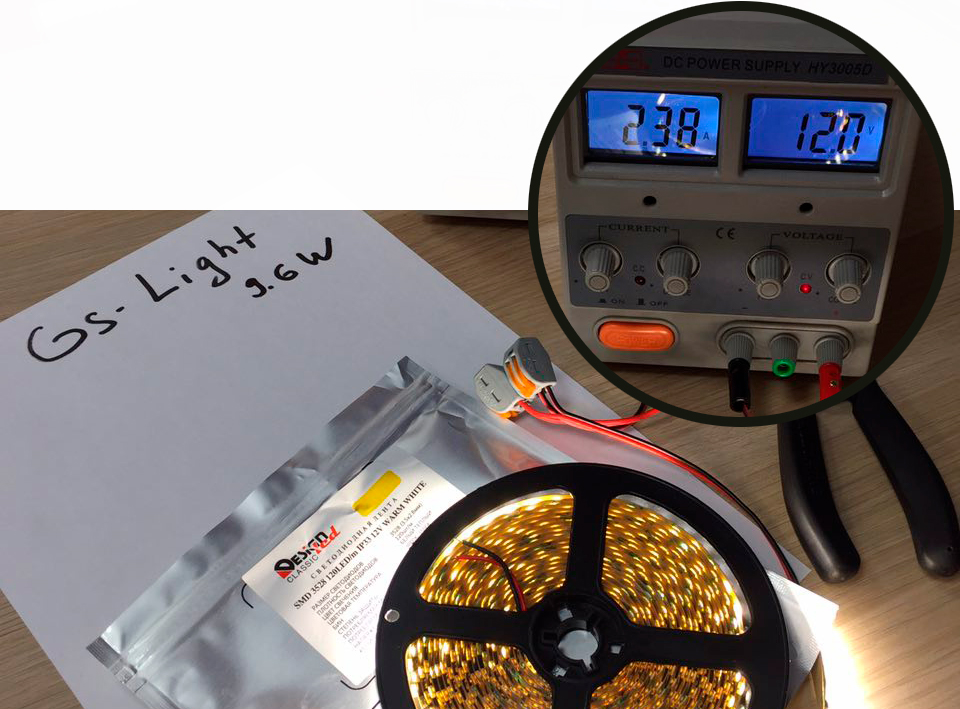
LED strip supplied by the store
LED strip with 3528 chip 120 diodes per meter.
According to the label and the information on the website, the LED strip consumes 9.6 W per meter at 12 volts.
При подключении ленты с одной стороны, мы видим, что лента потребляет 2.14А.
2.14*12/5 = 5.1W
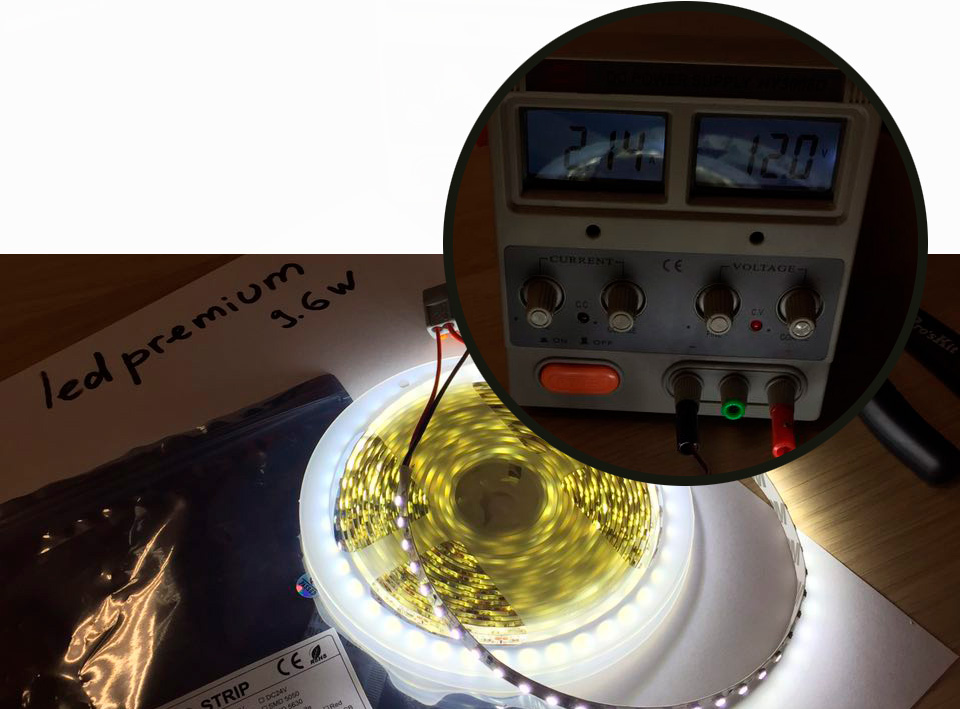
HOKASU
LED strip supplied by ULIGHT under the brand name Hokasu.
LED strip with 2835 chip 60 diodes per meter.
According to the label and the information on the website, the LED strip consumes 9.6 W per meter at 24 volts.
When you connect the ribbon on one side, we see that the ribbon consumes 2A.
2*24/5 = 9.6W
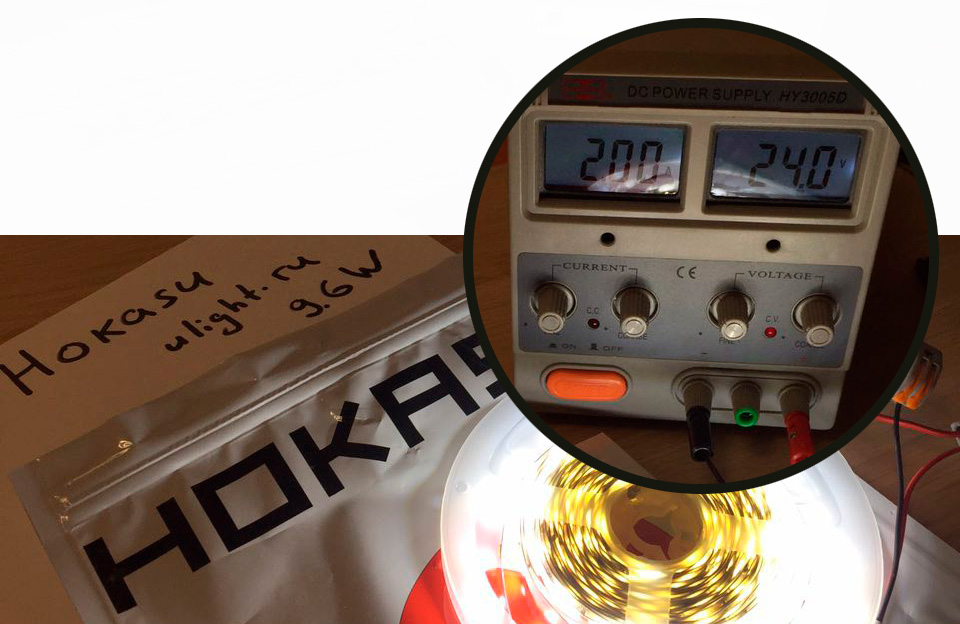
LED strip, which is supplied by Arlight under the Arlight brand.
LED strip with 2835 chip 120 diodes per meter.
According to the label and the information on the website, the LED strip consumes 17 watts per meter at 24 volts.
When you connect the ribbon on one side, we see that the ribbon consumes 2.99A.
2.99*24/5 = 14.3W
Please note that with such high power, it is mandatory to connect the LED strip on both sides.
In each package there is a book, where in bold it is written that it is forbidden to connect 5m on one side.
In the retest, the LED strip showed 16.8W..
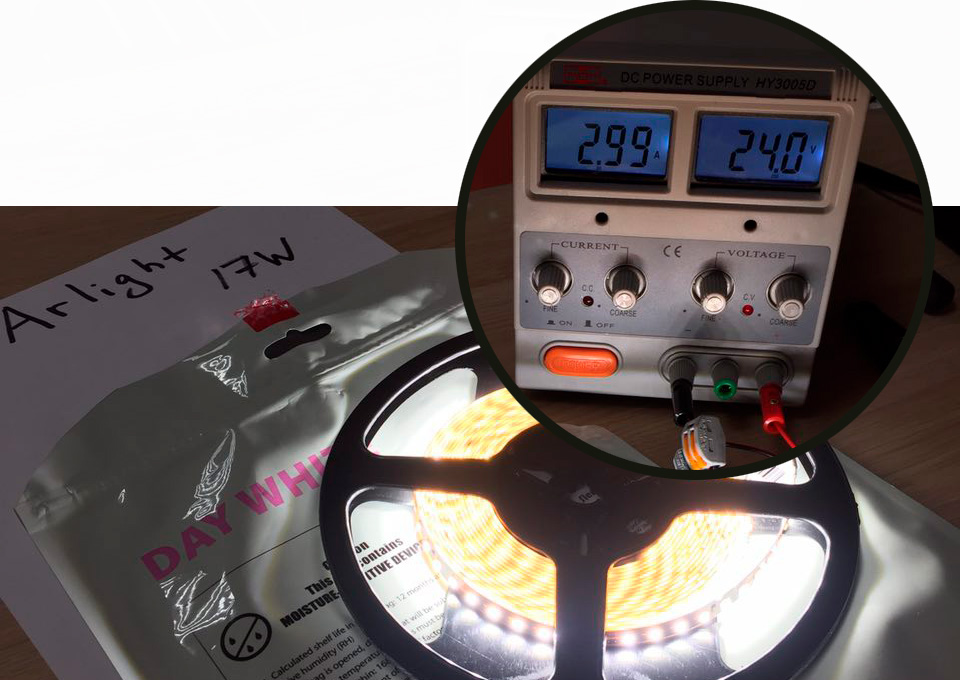
The LED strip supplied by the company .
LED strip with 2835 chip 60 diodes per meter.
According to the label and the information on the website, the LED strip consumes 12 watts per meter at 12 volts.
After looking at the chip data of the 2835, we concluded that the guys don't know what they're writing. This strip is supposed to deliver 9.6W at best.
If you remove more than 9.6W of power, the LED will last much less.
When you connect the ribbon on one side, we see that the ribbon consumes 2.96A.
2.96*12/5 = 7.1W
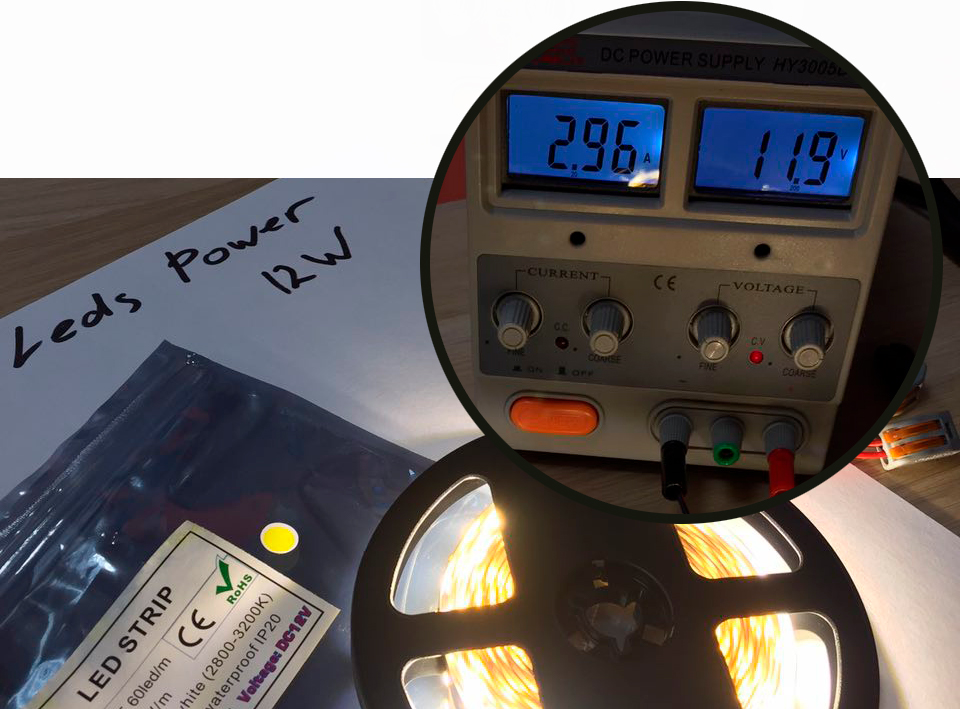
| Name | Power | W actual | Cost, rubles/m | Quality |
| HOKASU | 9.6 | 9.6 | 260 | 5/5 |
| Arlight | 17 | 16.8 | 606 | 5/5 |
| LedsPower | 12 (9.6) | 7.1 | 150 | 3/5 |
| GsLight | 9.6 | 5.7 | 129 | 2/5 |
| LedPremium | 9.6 | 5.1 | 135 | 2/5 |
As you can see cheap LED strips justify their cost, but do they do their job? Definitely not!
We can only guess, if they saved so much money on the board itself, what quality LEDs were used in the production,
which is already threatening with a low life span.
When a large current flows through a small conductor, the conductor melts and burns out, with the possibility of ignition.
The same principle is used to burn out incandescent bulbs.
Simply put: cheap tape can cause a fire
What LED strip is worth buying?
Not always, when you buy the most expensive product, you buy the best product.
But if you buy an LED strip with the lowest cost per meter, you are definitely buying a bad LED strip.
We advise you to read reviews, ask the store to do this little test, talk to the salesperson.
Here you can buy only quality LED strip.
What quality ribbons do supermarkets sell?
LED strips that are sold in Leroy Merlin or other construction stores are of very low quality. Large networks, and in particular the purchasing departments sort offers according to one criterion: price! Be literate and careful. There is no such thing as free cheese!
04.09.2023

